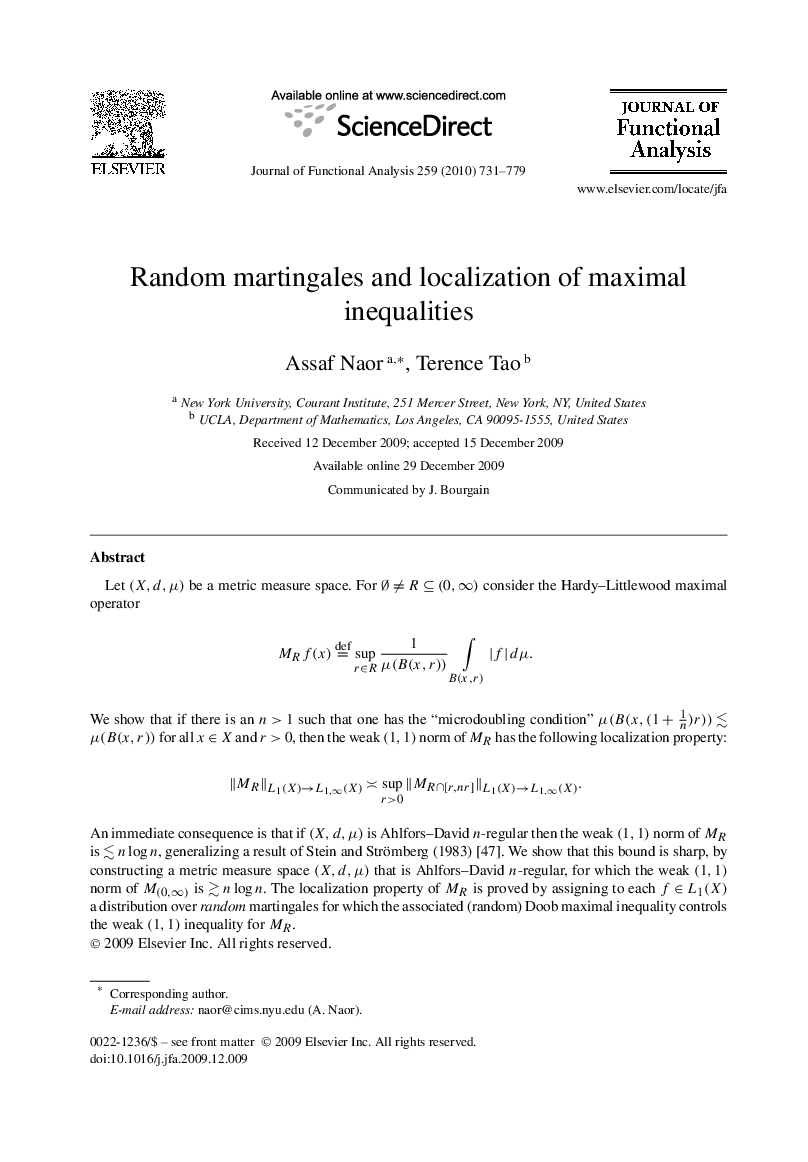| Article ID | Journal | Published Year | Pages | File Type |
|---|---|---|---|---|
| 4592156 | Journal of Functional Analysis | 2010 | 49 Pages |
Let (X,d,μ)(X,d,μ) be a metric measure space. For ∅≠R⊆(0,∞)∅≠R⊆(0,∞) consider the Hardy–Littlewood maximal operatorMRf(x)=defsupr∈R1μ(B(x,r))∫B(x,r)|f|dμ. We show that if there is an n>1n>1 such that one has the “microdoubling condition” μ(B(x,(1+1n)r))≲μ(B(x,r)) for all x∈Xx∈X and r>0r>0, then the weak (1,1)(1,1) norm of MRMR has the following localization property:‖MR‖L1(X)→L1,∞(X)≍supr>0‖MR∩[r,nr]‖L1(X)→L1,∞(X). An immediate consequence is that if (X,d,μ)(X,d,μ) is Ahlfors–David n -regular then the weak (1,1)(1,1) norm of MRMR is ≲nlogn, generalizing a result of Stein and Strömberg (1983) [47]. We show that this bound is sharp, by constructing a metric measure space (X,d,μ)(X,d,μ) that is Ahlfors–David n -regular, for which the weak (1,1)(1,1) norm of M(0,∞)M(0,∞) is ≳nlogn. The localization property of MRMR is proved by assigning to each f∈L1(X)f∈L1(X) a distribution over random martingales for which the associated (random) Doob maximal inequality controls the weak (1,1)(1,1) inequality for MRMR.
